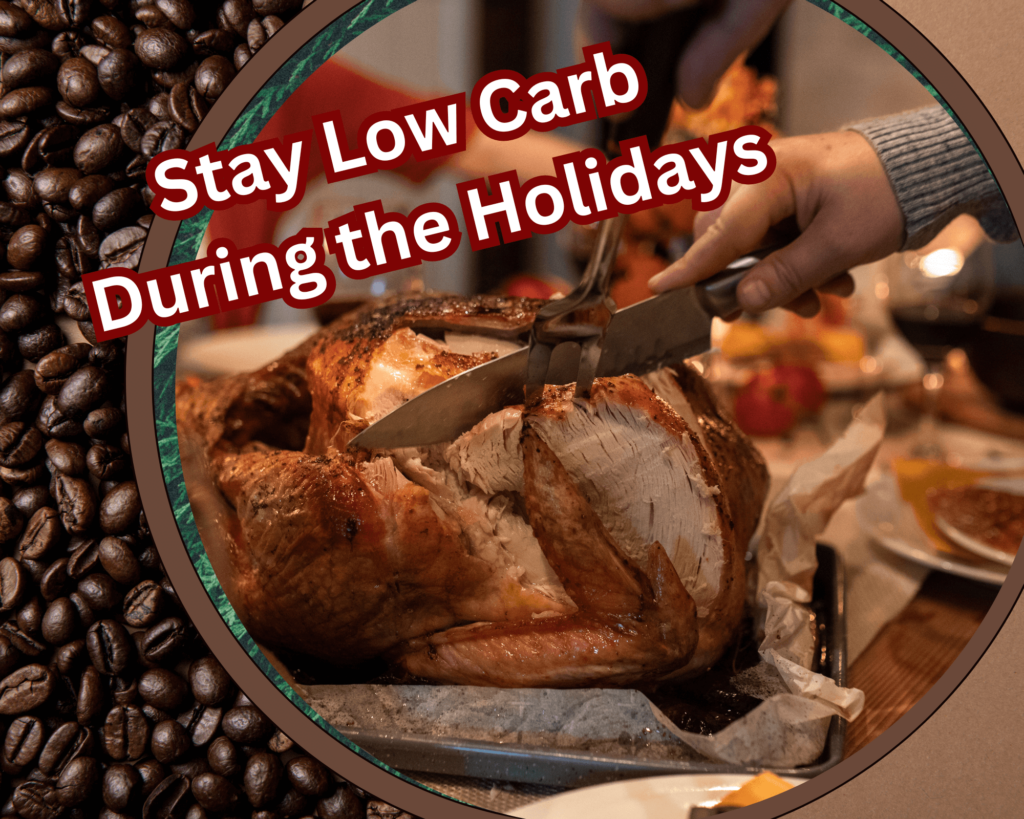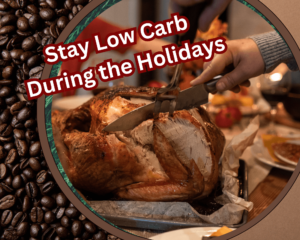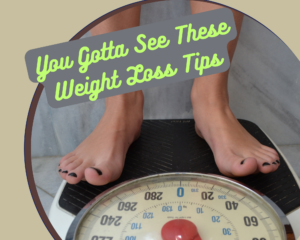
How to Stay Low Carb During the Holidays

Disclosure: Please be aware that I may receive a small commission (at no extra cost to you) if you decide to make a purchase after clicking on a link in this article and making your purchase through one of my affiliate links.
This site does not provide financial or medical advice and is just for entertainment purposes. Before making any significant dietary changes, you should talk to your doctor.
Our affiliate disclosure is available in our privacy policy.
How to stay low-carb during the holidays
The holiday season is a time of joy, celebration, and abundance and presents challenges and questions on how to stay low carb. It can be a minefield of temptation and dietary challenges for those following a low-carb lifestyle.
From decadent desserts to carb-laden cocktails and indulgent feasts, staying true to your low-carb commitments during this festive time might seem like an impossible task.
Fear not! With the right strategies and mindset, it’s entirely possible to navigate the holiday season while keeping your carb intake in check.
In this article, we will explore practical tips and creative approaches to help you stay low-carb during the holidays without feeling deprived or missing out on the fun.
Whether you’re navigating family gatherings, office parties, or festive dinners with friends, we’ve got you covered with delicious low-carb recipes, smart food swaps, and expert advice on maintaining your health goals while still savoring the spirit of the season.
Put on your jolly old hat and get ready to sleigh—er, slay—those holiday carbs!
Table of Contents
Plan ahead:
When it comes to the ketogenic diet, preparation is key. When you struggle with how to stay low carb during the holidays, you might prepare ahead of time if you know you’ll be going out instead of staying home.
The abundance of food, friends, and family makes the holidays more difficult. All of these people are begging you to sample their carb-heavy holiday treats.
Then there’s the problem of resisting the allure of those tasty carbohydrates. No need to worry over their resentment; in the long run, you’ll be relieved that you refrained from eating sugary treats..
Eat before you go out
Eating before going out is not just a matter of satisfying your hunger but also a strategic move for maintaining energy levels and making healthier choices while you’re out.
For those following a ketogenic lifestyle or low-carb diet, pre-eating can prevent temptations to indulge in high-carb, unhealthy options when dining out. By fueling up with healthy, nutrient-dense foods beforehand, you set yourself up for success in adhering to your dietary guidelines and avoiding the pitfalls of impulsive eating.
Choosing the right pre-outing meal is key to sustaining your energy levels and preventing cravings later on. Opt for a balanced meal including protein, healthy fats, and fibrous vegetables.
This combination not only keeps you full and satisfied but also helps regulate blood sugar levels throughout the evening. Planning ahead by filling up on nourishing foods means you can focus on enjoying social interactions rather than feeling distracted by hunger pangs or the allure of less-than-healthy food choices while you’re out.
Ultimately, making mindful decisions about what you eat before heading out allows you to take charge of your health and well-being while still being able to revel in social events without sacrificing your commitment to a healthy lifestyle.
Prepare low-carb substitutes for traditional dishes
Low-carb substitutes for traditional dishes have become increasingly popular among those following a keto or low-carb diet. With the right ingredients and culinary creativity, it’s possible to enjoy beloved classics without sacrificing your dietary goals.
For example, cauliflower can be transformed into a versatile replacement for rice or mashed potatoes, providing a satisfying texture while slashing carbs. Another stellar alternative is using zucchini noodles instead of traditional pasta, offering a lighter and more nutrient-rich option that won’t derail your low-carb lifestyle.
When it comes to creating low-carb substitutes, experimentation is key; consider using almond flour or coconut flour as alternatives for baking, yielding delectable keto-friendly treats. Swapping out sugar-laden sauces with homemade avocado-based dressings or flavorful herb-infused oils can elevate any dish while keeping carb counts in check.
Embracing these substitutions not only supports your health goals but also invites an exciting world of culinary innovation that transcends traditional limitations – truly revolutionizing how we approach food on a low-carb or keto journey.
Choose wisely at the dinner table
At the dinner table, it’s important to make smart choices and think about how your food choices affect your health as a whole. When you’re trying to stick to a ketogenic or low-carb diet, the dinner table becomes a battleground for temptation and compromise.
Delicious and filling low-carb or keto meals can still help you reach your health goals if you put in the time and effort.
It takes concentration and preparation to make smart choices while eating at home. Knowing how various foods impact your body can help you plan a meal that boosts energy levels while providing a variety of delicious low-carb and keto-friendly options.
This is helpful whether you’re at a social gathering or just eating at home.
Limit or avoid high-carb side dishes
When it comes to choosing side dishes, choosing high-carb options can have a substantial impact on your overall health. While high-carb sides like mashed potatoes or pasta salad may be tempting, they can lead to spikes in blood sugar levels and contribute to weight gain.
By favoring low-carb alternatives such as cauliflower rice, zucchini noodles, or mixed greens, you can enjoy satisfying meals without the risk of crashing energy levels that often accompany high-carb choices.
Embracing a keto-friendly approach to side dishes opens up an array of delicious and nutritious options. From roasted vegetables seasoned with herbs and olive oil to creamy avocado cucumber salad, the possibilities are endless when you explore low-carb recipes.
Making intentional choices when it comes to side dishes not only supports your health goals but also allows for more variety and creativity in your meal planning. So next time you’re pondering what to serve alongside your main course, consider the exciting world of low-carb and keto-friendly side dishes.
Watch out for hidden carbs
Always keep an eye out for carbs that may appear harmless when you’re trying to stick to a low-carb or ketogenic diet.
Keep in mind that many sauces, dressings, and condiments contain surprising amounts of carbs, which could sabotage your ketosis efforts. Because unseen carbohydrates are so common in restaurant food and pre-made meals, this is especially crucial to keep in mind when eating out.
Always read labels and go for fresh, whole foods if you’re trying to stick to a low-carb diet.
Cauliflower rice and zucchini noodles are two examples of popular keto dishes that are great low-carb options, but you should be careful with the ingredients you use.
Unexpectedly high carbs may be lurking in some store-bought versions due to additional flours or fillers. To make sure your keto-friendly meals really fit in with your diet plan, try making your own versions or reading labels thoroughly before buying. In order to make educated choices and maintain a successful low-carb lifestyle, it’s important to be aware of hidden carbs.
Be aware of sneaky sources of carbohydrates
Being mindful of hidden carb sources is essential if you are trying to stick to a low-carb or ketogenic diet.
The carbs in apparently healthy foods can catch you unaware, although some of the culprits, like bread and pasta, are easy to spot. As an example, despite their claims of being healthy, many granola bars and protein bars really contain a plethora of added sugars and refined grains, making them carbohydrate wolves.
Fruits, despite their health benefits, aren’t always the best option for people trying to stay in ketosis because of the sugar and carbs they contain.
In order to make educated decisions about the food you eat, it is crucial to read labels thoroughly. You can have more control over the ingredients used when you opt for whole foods and make your own keto dishes at home.
When trying to cut back on carbs, it’s important to be wary of condiments like ketchup and BBQ sauce because they can contain a lot of sugar.
Your ability to eat tasty, healthful meals while adhering to a low-carb lifestyle will be greatly enhanced if you are aware of and avoid these sneaky carb sources.
Read food labels and ask about ingredients
Those on low-carb or ketogenic diets must pay particular attention to the ingredients list and read food labels. You should dig deeper into the ingredient list than simply looking for the carb count.
The hidden sugars and starchy additives that are present in many processed foods may quickly derail your low-carb efforts. You can make better food choices if you learn the common names of ingredients like maltodextrin, dextrose, and high fructose corn syrup.
For those trying to stick to a low-carb diet, it’s also important to be specific when ordering food at restaurants or gatherings. Carbohydrates are sneakily present in many restaurants and ready-to-eat foods via thickeners and sweeteners.
You can take charge of your eating habits and achieve your goals by asking questions about these components. This method not only keeps you on track, but it also gets people thinking about how important it is to watch what they eat.
In conclusion, following a low-carb or ketogenic diet requires an in-depth understanding of ingredients and the ability to read food labels. Dig into the ingredient list to find any hidden carb sources; don’t rely on the macronutrient content alone.
You can show that you’re committed to sticking to your diet principles and encourage others to be more mindful of their food choices by asking questions about meal preparation at restaurants and social events.
Practice portion control
Following a low-carb or ketogenic diet requires strict portion control. Although these eating plans can help you lose weight and improve your health, it’s still crucial that you don’t eat too many of the good things.
To help you control your portion sizes, try using smaller bowls and plates. This will give the impression that you’re eating more food than you actually are. Because it is easy to eat too much rice or pasta, two foods that are high in carbohydrates, measuring out serving sizes is another useful strategy.
Overeating can be helped by paying attention to signs of hunger and eating slowly. Savoring every bite and putting down the fork in between can help you control your portion sizes because it takes time for the body to signal fullness.
Dieters on a low-carb regimen can control their calorie consumption without sacrificing taste or nutrition by becoming experts at portion control.
Use smaller plates and utensils
Using smaller plates and utensils is a great way to practice portion control and sticking to a low-carb ketogenic diet.
People can eat less food when served in smaller plates, according to research. Using visual cues, this easy trick can retrain your brain to recognize healthy portion sizes, which can help with weight management.
One way to make it easier to stick to a low-carb diet is to reduce the size of your serving dishes and cutlery. By design, smaller plates make it harder to pile on food, which in turn encourages better portion control and curbs overeating.
Furthermore, you might find that you eat more slowly, enjoy each bite more, and end up feeling fuller with less food if you use smaller utensils. If you’re looking for a way to eat keto-friendly without sacrificing taste, maybe these little adjustments to your dinnerware will help.
Listen to your body's hunger cues
Pay close attention to your hunger signals if you’re trying to maintain a low-carb or ketogenic diet.
Learning to differentiate between actual hunger and emotional or habitual cravings is a fundamental principle of this eating style. Staying in control of portion sizes and maintaining a healthy balance can be achieved by paying attention to the signals your body sends about when and what to eat.
Instead of fixating on counting calories or following strict meal plans, pay attention to the cues your body gives you when it needs food.
Paying close attention to these cues will help you control your portion sizes so you don’t go overboard on calories while still getting all the nutrients you need.
Additionally, you can align with the principles of mindful eating and cultivate a healthier relationship with food in general by being attuned to your body’s natural hunger cues. The secret to a low-carb or ketogenic diet is learning to accept hunger as a natural cue to eat, rather than an evil sign in and of itself.
Stay active and mindful
Being physically active is only one part of being active and mindful; it also includes being very self-aware and purposeful in all of your decision-making.
A low-carb or ketogenic diet may help you reach your goal. Cutting back on carbs can help you concentrate better in the gym, feel more energized overall, and think more clearly. In addition to improving your physical health, a well-balanced diet can help you stay mindful by avoiding energy lows and highs.
Practicing mindfulness before, during, and after exercise can help you maintain a state of heightened awareness and concentration, which is essential for optimal performance.
Connecting with your body, calming your mind, and reducing stress can all be achieved through the practice of mindful movement techniques like tai chi or yoga. Both your physical performance and your general health can benefit from making these changes to your daily routine. One way to gain a better grasp of the mind-body connection is to be physically active while paying attention to one’s needs.
Finding ways to be active and mindful is becoming more and more important as we try to keep up with our ever-busier lives. Finding out how to maintain a low-carb or ketogenic diet opens the door to trying new things that fit in with our principles of being mindful, healthy, and purposeful.
Incorporate physical activity into your day
Maintaining a healthy and balanced lifestyle, particularly while adhering to a low-carb or ketogenic diet, requires regular physical exercise.
In addition to helping with weight management, regular physical activity has many other health benefits, including enhanced mood, cognitive function, and general well-being. Engaging in physical activity shouldn’t be seen as a chore, but rather as a mindful practice that strengthens your bond with yourself and the environment.
Finding things you enjoy doing is a great way to keep moving while on a low-carb or ketogenic diet. When you incorporate activities that you enjoy into your daily routine, like hiking in nature, practicing yoga, or doing high-intensity interval training, you will find that staying active becomes less of a chore and more of a pleasure.
Making little changes to your routine, like taking the stairs instead of the elevator or going for a walk during your lunch break, can add up to big changes in your activity level. When one approaches physical activity with awareness and purpose, it becomes a cornerstone of a low-carb or ketogenic lifestyle that promotes health and wellness.
Practice mindfulness while eating to prevent overeating
One effective strategy for fostering a balanced relationship with food and avoiding overeating is to eat with awareness and intention.
One way to train oneself to recognize when one is full is to focus one’s attention on the tastes, textures, and sensations of each bite. This method helps us enjoy our meals more fully by letting our brains process fullness slowly, which in turn reduces the likelihood that we will overeat in the future.
Mindfulness can help us make intentional food choices, which is especially important when following a low-carb or ketogenic diet. Each bite can be both delicious and nutritious if we prioritize high-quality proteins, healthy fats, and vegetable dishes that are rich in fiber.
People often overeat carbohydrate-heavy foods because they aren’t able to distinguish between emotional and physical hunger. Mindfulness eating can help with this. To achieve our health goals, it’s important to eat mindfully, which means paying attention to our hunger cues and satiety levels as we eat.
Summary: Staying low-carb
Remaining low-carb is more than a fad; it’s a way of life that has caused an enormous shift in our perspective on what constitutes healthy food.
A growing number of people are realizing that the ketogenic diet and lifestyle can do wonders for their health and wellness beyond simply helping them lose weight.
We can aid in stabilizing blood sugar levels, reducing inflammation, and even supporting mental clarity by cutting back on carbs. A low-carb diet has many advantages, but that’s not all: it can boost energy and digestion.
A new way of thinking about maintaining a low-carb diet is the significance of eating nutrient-dense whole foods. Emphasizing the importance of consuming a variety of high-quality proteins, healthy fats, and non-starchy vegetables should take precedence over a strict carbohydrate diet.
In addition to promoting fullness, this method supplies your body with nutrients it needs to perform at its best. In addition to the obvious health benefits, adopting a low-carb lifestyle opens our palates to a world of delicious new foods and recipes.
Ultimately, the key to maintaining a low-carb diet is not restriction but rather the adoption of educated decision-making that puts our health and wellbeing first in the long run. Better eating habits that boost our overall vitality can be ours when we learn how a low-carb approach can promote balanced blood sugar levels and reduce inflammation.
Dive into the realm of low-carb living for an illuminating experience that extends beyond food choices, whether you’re seeking to optimize your wellness journey, manage your weight, or both.
Table of Contents


How Many Carbs in a Low-Carb Diet Is Ideal?

Jumpstart Your Journey: Starting a Low-Carb Diet 101

Keto and Intermittent Fasting Combo for Weight Loss

The Big Question About the Keto Diet for Weight Loss

How to Stay Low Carb During the Holidays

An Easy Low-Carb Meal Plan for Fat Loss

Mindful Eating: Key to Your Keto Diet During the Holidays

Your Ultimate Guide to the Best Keto Vegetables

What happens when you eat a low-carb high-fat diet?

How Many Carbs Are in a Low-Carb Diet? Let’s Take a Look.

Top Tips for Fast and Effective Weight Loss
Disclosure: Please be aware that I may receive a small commission (at no extra cost to you) if you decide to make a purchase after clicking on a link in this article and making your purchase through one of my affiliate links.
This site does not provide financial or medical advice and is just for entertainment purposes. Before making any significant dietary changes, you should talk to your doctor.
Our affiliate disclosure is available in our privacy policy.











